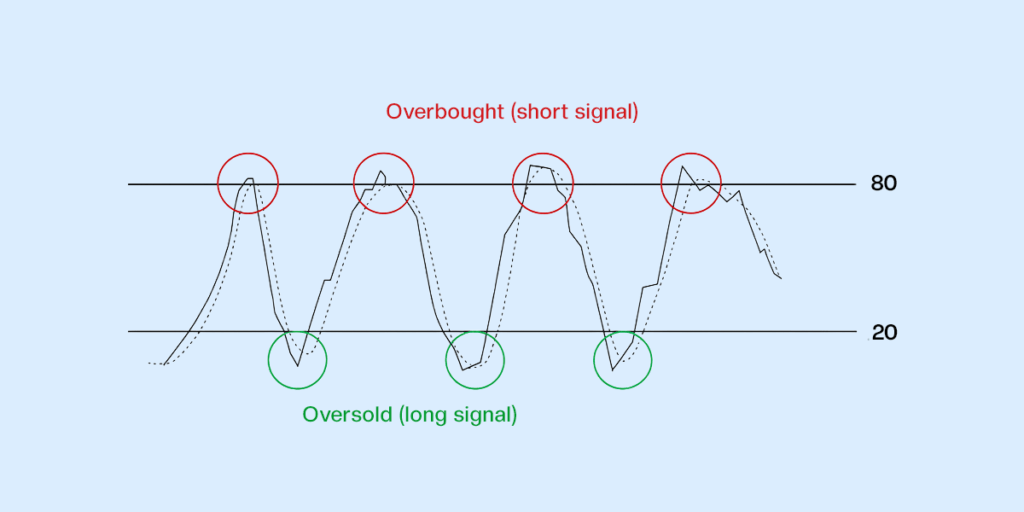Quick Summary:
– Fundamental analysis assesses the total value of a company based on its financial statements, economic indicators, and industry analysis to make long-term investment decisions.
– Technical analysis forecasts short-term price movements by analyzing chart patterns, trading volume, and market trends.
– Fundamental analysis is most useful for long-term investors, while technical analysis is optimal for traders cashing in on short-term price movements.
– Performing both analyses enhances an investor’s overall strategy and allows for improved decision making and risk management.
– The appreciate app has tools for both analysis types, or if desired, allows users to use AI for all stock recommendations and at low transaction costs.
Investing in the stock market requires understanding various methodologies to make a correct investment decision. These approaches ensure that you invest wisely and get the maximum ROI with optimal risk management.
To that end, fundamental and technical analysis emerged as two primary methodologies investors/ traders use for evaluating stocks. The former involves examining a company’s financial statements, financial ratios, performance, and economic indicators to determine its intrinsic value. At the same time, technical analysis focuses on charts, candlestick patterns, volumes, and price movements to predict the future price of a particular stock. Both analyses rely on the CMP (current market price) of a stock for future predictions.
Understanding both methodologies is crucial for investors, as they provide different perspectives on stock valuation and market behaviour.
Each method caters to different types of investors. Fundamental analysis suits investors seeking long-term potential in a company’s stock, while technical analysis is ideal for traders seeking capitalising on current market trends.
Let’s understand them in detail.
What is Fundamental Analysis?
Fundamental analysis evaluates a company’s intrinsic value by assessing related financial, economic, and qualitative factors. It examines financial statements, market trends, economic conditions, and industry indicators to evaluate a company’s overall health and growth potential.
Pro Tip: If you’re seeking to maximise your returns, investing in emerging markets with high growth potential is a great opportunity. If you prefer investing mostly in companies that are global leaders in their respective industries, consider investing in US stocks.
This approach helps investors determine whether a stock is undervalued or overvalued, which guides their long-term investment decisions.
Key features of Fundamental Analysis
Financial Statement Analysis
Financial statement analysis includes a thorough analysis of a business’s income statement, balance sheets and cash flow statement.
These statements provide insights into the company’s profitability, financial position, and cash-generation capabilities.
Economic Indicators
Economic indicators such as GDP, unemployment, and inflation are crucial in fundamental analysis. They help investors understand the macroeconomic environment and its impact on a company’s operations.
Industry Analysis
Industry analysis involves assessing the overall industry context, including market share, competition, and growth prospects. This helps investors understand the industry dynamics and analyse the business performance by comparing it to competitors.
Company Analysis
Company analysis assesses a company’s management, business model, and competitive advantages. It helps investors examine how well the company is being managed and its long-term viability.
Valuation Methods
Valuation methods like Discounted Cash Flow (DCF), Price-to-Earnings (P/E) ratio, and other metrics are used to calculate a company’s intrinsic value. These metrics help investors ascertain whether a stock is fairly valued, undervalued, or overvalued.
Qualitative Factors
Qualitative factors include brand value, management effectiveness, and market positioning. These non-financial factors play an essential role in a company’s long-term success.
What is Technical Analysis?
Technical analysis is a method of forecasting future stock prices by analysing past market data, historical prices, and trading volume.
Unlike fundamental analysis, which focuses on a company’s intrinsic value, technical analysis relies on chart patterns and historical market data for predicting future price movements and trends.
Key features of Technical Analysis
Chart Patterns
Chart patterns like ‘Heads and Shoulders’, ‘Double Tops’ and ‘Bottoms’, and ‘Triangles’ are essential in technical analysis. They identify potential reversal and continuation signals in the market and help traders predict future price movements.
Technical Indicators
Technical indicators, including relative strength indexes, moving averages & MACD, provide insights into market trends and momentum. These indicators help traders make informed investment decisions.
Trading Volume
Trading Volume analysis is essential for confirming the strength of a price movement. High volume during a price increase indicates strong buying interest, whereas high volume during a price decrease suggests strong selling pressure.
Price Trends
Identifying bullish and bearish trends in the stock market is a core aspect of technical analysis. These trends indicate the market’s overall direction, helping traders align their trading strategies about when to enter or exit.
Time Frames
Time frames are another critical aspect of technical analysis. Different time frames (daily, weekly, monthly) provide different perspectives on market trends and help traders tailor their trading strategies.
Market Sentiment
Assessing market sentiment involves understanding the trading psychology toward a particular stock or market through price movements and trading volumes. Understanding these sentiments will help traders gauge the market’s mood and direction.
Fundamental Analysis vs Technical Analysis
Now that you know fundamental and technical analysis, let’s understand their differences, which will help you choose an adequate investment strategy.
Methodologies
Fundamental analysis uses qualitative and quantitative analysis to evaluate a company’s financial health, market position, and value. Technical analysis relies on chart patterns and indicators to predict price movements.
Objectives
Fundamental analysis aims to assess long-term value, while technical analysis aims to predict short-term price fluctuations and identify market entries and exits.
Data and Tools
Fundamental analysis uses financial statements, economic indicators, and industry data. In contrast, technical analysis depends on price, volume, and other technical indicators.
Interpretation
Fundamental analysis involves identifying undervalued stocks for long-term gains. Technical analysis focuses on market data to time market entries and exits to book short-term profits.
Table of Differences Between Fundamental and Technical Analysis:
| Aspect | Fundamental Analysis | Technical Analysis |
| Focus | Company’s intrinsic value | Stock price movements |
| Purpose | Long-term investment decisions | Short-term trading opportunities |
| Data Sources | Financial statements, economic reports | Historical price data, trading volume |
| Time Horizon | Long-term | Short-term to medium-term |
| Techniques | DCF, P/E ratio | Moving averages, RSI, MACD |
| Factors | Economic, financial, qualitative | Price, volume, momentum |
| Users | Long-term investors, value investors | Day traders, swing traders |
| Tools & Software | Financial analysis software, economic databases | Charting software, trading platforms |
How to Use Both Fundamental and Technical Analysis Together?
Combining fundamental and technical analysis provides investors with a 360-degree approach towards making well-informed investment decisions.
This dual approach strategy allows investors to leverage the strengths of both methods and find opportunities that may have been missed if only one type of analysis was being used.
Holistic View
Investors gain a holistic view of their investments using fundamental analysis for long-term value assessment and technical analysis for timing market entries and exits.
Fundamental analysis helps to identify undervalued stocks with robust financial health and growth potential. Meanwhile, technical analysis provides insights into optimal buying and selling points based on price movements and market trends.
Better Risk Management
Combining fundamental and technical analysis provides a robust framework significantly reducing investment risk. Fundamental analysis helps identify financially stable stocks and minimises the risk of investing in poor-quality ones.
Technical analysis, on the other hand, provides insights into market sentiment and price trends, helping to avoid unfavourable market conditions and improve timing decisions.
This integrated approach creates a balanced strategy that enhances overall investment performance and mitigates potential losses.
Pros and Cons of Fundamental and Technical Analysis
Pros of Fundamental Analysis:
- Long-term Focus: Fundamental analysis allows you to take a long-term outlook on investing by evaluating a company’s intrinsic value and growth potential over a period of years.
- Comprehensive Understanding: It provides investors a comprehensive understanding of a company’s financial health, performance, and competitive positioning, enabling informed investment decisions based on thorough research and analysis.
Cons of Fundamental Analysis:
- Time-consuming: Conducting fundamental analysis requires significant time and effort to research and evaluate financial statements, economic indicators, and qualitative factors.
- Requires Deep Knowledge: Effective fundamental analysis necessitates a deep understanding of accounting principles, financial metrics, and market dynamics, which can be challenging for less experienced investors.
Pros of Technical Analysis:
- Trend Identification: Technical analysis excels at identifying trends and patterns in price movements. By recognizing these trends, traders can make more informed decisions about when to enter or exit positions, potentially maximizing profits.
- Quantifiable Data: Technical analysis relies on historical data and mathematical indicators, providing a quantifiable and systematic approach to trading. This objectivity can help traders avoid emotional biases in their decisions.
Cons of Technical Analysis
- Misleading in Volatile Markets: In highly volatile markets, technical signals can be unreliable and lead to incorrect predictions.
- Requires Constant Monitoring: Effective use of technical analysis demands continuous monitoring of market conditions and price charts, which can be time-intensive.
Why Choose Appreciate App for Fundamental And Technical Analysis?
If you’re looking for a powerful yet user-friendly tool to enhance your investment strategy, the Appreciate App has got you covered. With comprehensive analysis tools and personalised AI recommendations, it’s designed to help you make smarter financial decisions effortlessly.
Appreciate offers numerous benefits, some of which are as follows:
Comprehensive Analysis Tools
Appreciate offers a wide variety of tools for fundamental and technical analysis, providing everything you need to evaluate and trade stocks effectively.
Low Transaction Fees
With Appreciate, you can enjoy cost-effective trading with low transaction fees, helping you keep more of your investment returns.
AI Recommendations
With advanced AI recommendations, Appreciate offers a personalised investment that helps you make informed decisions tailored to your goals and profile.
Educational Resources
It also provides access to many tutorials and resources covering fundamental and technical analysis, empowering you to enhance your investment knowledge and skills.
Wide Range of Investment Products
Appreciate allows you to invest in diverse products, including US equities, ETFs, fixed deposits, and fractional investing. It helps you to build a well-rounded portfolio.
Automated Features
With Appreciate, you can take advantage of automated features such as Systematic Investment Plans (SIPs) and one-click transfers, making investing simpler and more convenient.
Security
Rest assured, with advanced encryption and strict regulatory compliance, your investments and personal data are completely safe and protected.
Ready to elevate your investing game? Download the Best Stock Market App now and start making smarter investment decisions with Appreciate!
FAQs on Fundamental and Technical Analysis
Which is better, fundamental or technical analysis?
The answer depends on your investment goals. Fundamental analysis would be ideal if you are a long-term investor looking to assess a company’s intrinsic value. Conversely, technical analysis would be more suitable if you are a short-term investor who focuses on short-term price movements.
Is fundamental analysis enough for trading?
Fundamental analysis can provide valuable insights into a company’s long-term potential, but it may not be enough for trading, especially in the short term.
Combining it with technical analysis can enhance investment decisions for better timing.
Is technical analysis enough for trading?
Technical analysis can be effective for short-term trading as it helps to predict price movements, but it might miss a stock’s underlying value in the long run.
Combining it with fundamental analysis will be a more comprehensive approach.
Do day traders use fundamental analysis?
Day traders mostly use technical analysis to make quick trading decisions based on short-term price movements. However, some may use fundamental analysis to gauge broader market conditions or major events that could impact the stock price.
What is the difference between fundamental analysis and financial analysis?
Fundamental analysis includes financial analysis as one of its components. Financial analysis focuses on evaluating a company’s financial statements, while fundamental analysis also considers economic conditions, industry trends, and qualitative factors.
What is fundamental analysis vs technical analysis vs sentiment analysis?
Fundamental analysis evaluates a stock’s intrinsic value based on financial health and economic factors.
Technical analysis predicts future price movements using historical price data and trading patterns. Sentiment analysis assesses market psychology and investor sentiment through news, social media, and other sources.
Can you use both fundamental and technical analysis?
One can easily use both fundamental and technical analysis to provide a comprehensive investment strategy.
Fundamental analysis helps identify fundamentally strong stocks with good growth potential, while technical analysis identifies entry and exit points, enhancing overall
decision-making and risk management.
Conclusion
Understanding both fundamental and technical analysis is crucial for making well-informed investment decisions. Each method offers unique insights, and combining them can provide a more holistic view of the market, enhancing your investment strategy.
To take your investing to the next level, download and use the Appreciate Trading App. Its comprehensive analysis tools, AI-driven recommendations, and low transaction fees provide the correct resources to succeed in the stock market.
The app also supports investors in both the Indian and US stock markets, offering a diverse range of investment opportunities.























